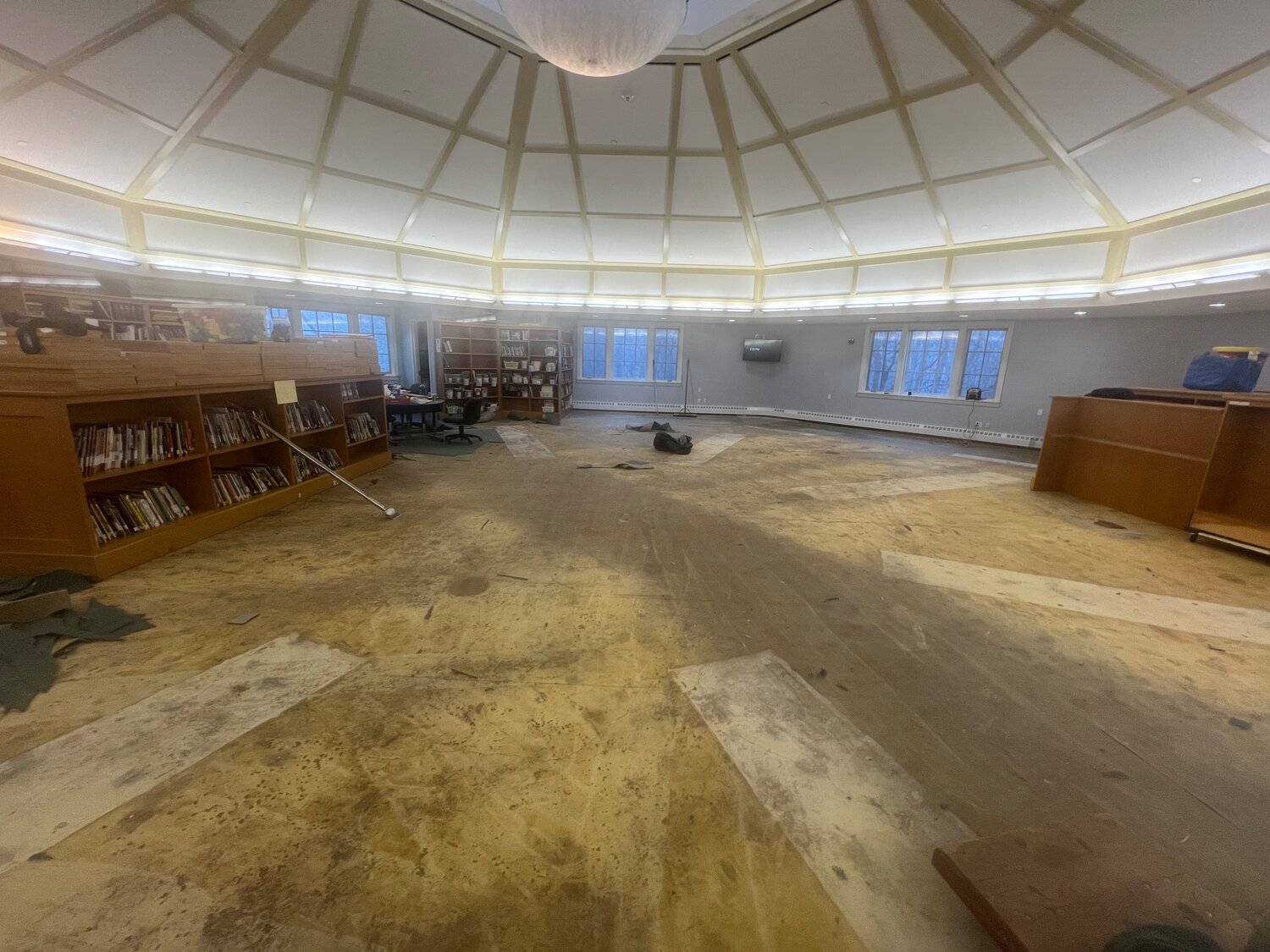Mill Neck School opens new Learning Commons
The Mill Neck Manor School for the Deaf recently announced the near-completion its new Learning Commons, a state-of-the-art STEAM (science, technology, engineering, art, and mathematics) facility designed to offer students a more interactive and technology-driven educational experience.
The project, which began roughly a year and a half ago, was driven by the school’s commitment to providing its deaf and hard-of-hearing students with access to the same resources and opportunities available in other public schools.
The Learning Commons was developed under the leadership of Dr. Bradley Porche, the executive director and superintendent of the Mill Neck Manor School for the Deaf. Porche, who has a background in technology administration and previously established a STEAM lab at the New York School for the Deaf, said that he recognized the need for such a facility at Mill Neck.
“When I came here to Mill Neck, I realized that our students needed access to the same kinds of resources that students in public schools have,” Porche, who is deaf, said through sign language with the assistance of Donna Gualberti, a staff interpreter for the school. “We’ve always provided equal access, but the idea was to expand the knowledge and skills our students could acquire, especially as STEAM education can be applied to all different jobs in real life.”
The Learning Commons occupies what was formerly the school’s library, which Toula Ramey, director of development and communications for the Mill Neck Family of Organizations, said has been completely reimagined to accommodate a range of technology and science-based activities. She added that the renovation was not about creating more space but about optimizing the existing space to better serve the school’s educational goals.
The facility is divided into stations, each designed to foster different aspects of STEAM learning. These include a computer lab with 3D printers, an eSports area, a makerspace for robotics and drone technology, and a STEAM lab for hands-on experiments in engineering and physics. One unique feature is an “earthquake machine,” where students can test the strength of structures they build.
“The Learning Commons is really a world of its own,” Porche said. “We’ve created an environment where students can engage with technology in ways that are both fun and educational. It’s all about applying real-world theories in a hands-on way.”
Given the specific needs of the school’s student body, Porche emphasized that particular attention was paid to making the Learning Commons a deaf-friendly and visually accessible space. The design incorporates an open layout, ensuring that students can see and communicate with each other easily through sign language. The color scheme was carefully chosen to enhance visibility, with light blue tones replacing the darker, more muted colors that previously dominated the school’s interior.
“In other STEAM labs, I noticed that certain areas were enclosed or divided, which wouldn’t work for us. We needed an open space where students could see each other at all times, allowing them to communicate easily,” Porche said. “We also used ‘deaf space’ design principles, which take into account things like lighting, color, and the arrangement of furniture to create an environment that is conducive to visual communication.”
The construction of the Learning Commons was funded through a combination of state funding, a legislative grant, and donations from supporters of the school. Ramey added that the project reflects Mill Neck’s ongoing commitment to providing high-quality education to deaf and hard-of-hearing students.
“This was a huge initiative for us,” Ramey said. “We received support from all over, including state funding and donations. It’s never quite enough, so our job in development is to continue raising funds to supplement what isn’t covered by the state. But seeing the finished space, it’s clear that it was all worth it.”
While the new facility will not be officially completed until its grand opening on Sept. 12, Porche said that excitement is already building among the students, many of whom are eager to dive into the new opportunities the Learning Commons offers.
“From day one, the students have been asking questions about what’s happening with the library and what they’ll be able to do in the new space,” Porche said. “I would just keep telling them, ‘Just wait, you’ll see’.”
The Learning Commons is now 95 percent complete, according to Porche and Ramey. Porche added that throughout the process the most rewarding aspect of the project has been seeing the growth of students curiosity and excitement.
“They’re already talking about what they want to build and what they want to learn,” he said. “The idea that the students have started to get so inquisitive, that this was helping to expand their mind and their questions, I can’t tell you how inspiring that is.”
Anyone interested is invited to attend the ribbon-cutting ceremony for the new facility on Sept. 12 at 1 p.m. at 40 Frost Mill Road in Mill Neck. To RSVP, call or email Ryan Niewender at (516) 628-4223 or ryan.niewender@millneck.org. For more information on the Mill Neck School for the Deaf or any of the other parts of the Mill Neck Family of organizations visit MillNeck.org.






